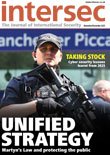La Haine
In the wake of the Charlie Hebdo killings, Anthony Tucker-Jones assesses the trend in Islamist attacks sparked by the media’s depiction of Islam
France’s latest terror attack ended in a blaze of gunfire and the deaths of Cherif and Said Kouachi at a print works in the small town of Dammartin-en-Goele. Prior to this, on 7 January, the brothers burst into the offices of French satirical magazine Charlie Hebdo and, in an orgy of violence, shot 19 people, 12 fatally. During their getaway they shot dead a police officer who attempted to block their escape route.
In scenes taken straight from a Hollywood action movie, the pair then robbed a petrol station to the north east of Paris. They commandeered another vehicle at Montagny Sainte Felicite, during which Said was reportedly hit in the neck in a shootout with the police. The brothers fled to Dammartin-en-Goele and took refugee in an industrial estate on the outskirts of the town at a printing firm called Creation Tendance Decouverte. French counter-terrorist units quickly moved in and lay siege to the building.
Realising they had run out of options, on 9 January the Kouachis came out of the building firing on the police, with predictable results. In the meantime, the violence spread as a lone gunman shot two people in the southern suburb of Montrouge. Identified as Amedy Coulibaly, the shooter then took hostages at a kosher supermarket at Porte de Vincennes in eastern Paris. He demanded that the Kouachis be set free – but suffered their fate when police stormed the building.
The Charlie Hebdo attack caused a wave of panic throughout France. The French authorities deployed 120,000 troops and police on terror alert. Politicians and punters alike asked whether this heralded a new type of terrorism. Like many European countries, there was much soul searching about the “enemy within”. In reality, France has a long history of Islamist and anti-Semitic attacks throughout the 1980s and 1990s, thanks to its colonial history with Algeria.
Twenty years ago, the French movie La Haine (the hate) was an international hit. It was a brutal indictment of economic and social depravation suffered by immigrant communities in France’s inner city estates. After the Charlie Hebdo shootings in Paris, it seems that nothing has changed. Some French immigrants still feel alienated and deprived to the point of hatred toward their adoptive country. In the UK suburbia is seen as respectable; in France the banlieues have much darker connotations. Successive French governments sought to counter their culture of drug dealing, robbery and gang warfare, but the banlieues have also become a breeding ground for militant Islam.
The murder of staff working on Charlie Hebdo brutally highlighted the dangers posed by Islamists’ violent responses to Western portrayals of their faith and the Prophet Mohammed. The Kouachi brothers are in fact part of a growing trend, and join the likes of Roshonara Choudhry, Andrew Ibrahim, Arid Uka, Abdul Sabor and Mohammed Bouyeri – all of whom were driven to kill by Western media.
To some, Patrick Charbonnier – the late editor of Charlie Hebdo – was the architect of his own destruction. Others see him and his late colleagues as martyrs to the cause of free speech. A stock in trade role of political cartoonists is to amuse and offend in equal measure – rationally, one would not think this justifies a death sentence. Islamists believe otherwise.
It is always important to remember that Islamists see Islam as a political doctrine, while most Muslims adhere to it for spiritual and moral guidance. It is those who see Islam as a secular tool with which to punish transgressors that puts them at odds with the broad church of Islam’s faithful. The problem faced by those trying to justify open – and often controversial – political discourse regarding Islam is that most Islamists are simply not receptive to Western rationalisation.
In recent years, multimedia, be it online, video or print journalism, has become a source of aggravation and inspiration for Islamists seeking to strike at Western interests and culture. The media coverage of Western intervention in Iraq and Afghanistan was a rallying cry for polemic Muslim agitators. At the same time, some incidents are perceived as flagrant provocation while others go completely unchallenged.
A point in case was in 2013 when this writer argued in a military court on behalf of Royal Marine Sergeant Al Blackman (who stood accused of murdering a wounded Taliban fighter) that he and the others involved should not be named in the media. The Ministry of Defence has a duty of care to its personnel and families and should do nothing to put them in harm’s way, whatever the circumstances. Revealing their names to the press was playing Russian roulette as the marines, leaving family and friends be exposed to the threat of attack by “lone wolves”. In effect, they would become poster boys for jihadist recruiters. Worryingly, there was already a precedent of unsuccessful plots by homegrown jihadists to murder British servicemen – it was only a matter of time before they were successful. Unfortunately, the murder of Fusilier Lee Rigby proved to be the culmination of such vile plans.
Once Sergeant Blackman was convicted, his identity was revealed – thankfully nothing has happened to him to date, but he will have to serve his sentence under maximum security for his own safety, and on release will have to assume a new identity. Prior to the trial the prosecution, supporting the media’s application for the accused’s identity, argued that the treatment of Iraqi prisoners, including the hotel receptionist Baha Mousa who died while in British custody, was common knowledge and that there had been no revenge attacks. As the UK’s Office of Security and Counter-Terrorism pointed out, this argument flagrantly ignored a series of high-profile and deadly attacks that had been motivated by the media and the internet.
Isa Ibrahim (aka Andrew Ibrahim), a 20-year-old from Westbury-on-Trym, Bristol, was convicted in 2009 of making homemade explosives and a suicide vest. It emerged that he had converted from Christianity to Islam and changed his name. Although he was not part of a network, as a vulnerable loner he had become radicalised after Googling such people as radical cleric Abu Hamza.
That same year Roshonara Choudhry – a once exemplary college student – started downloading sermons and writings by the late leader of al-Qaeda in the Arabian Peninsula, Anwar al-Awlaki. The following year she dropped out of her studies, cleared her debts and on 14 May 2010 attempted to murder MP Stephen Timms who had voted in favour of the war in Iraq. Although stabbed twice, Timms survived his ordeal and Choudhry was sentenced to 15 years in prison. Another young life had been ruined by the contents of the Internet.
In 2011 Arid Uka, a 21-year-old Kosovan Albanian, was incensed after he followed a link to a Facebook video that allegedly showed US troops violently raping a teenage Muslim girl. In reality it was a clip from director Brian De Palma’s 2007 film Redacted about US troops in Iraq. Enraged, Uka made his way to Frankfurt airport where he proceeded to shoot two US servicemen. Both were killed and he wounded two others before being overwhelmed. This was Germany’s first Islamist attack.
Another shooting sparked by an online video was conducted by Afghan soldier Abdul Sabor. On 20 January 2012 he shot and killed four French soldiers and wounded a further 15 as they jogged round their base. A fifth victim later died of his wounds. Sabor said he had carried out the killings in revenge for a video showing US Marines urinating on Taliban corpses.
The Netherlands was the scene of one of the earliest media motivated Islamist killings. A Dutch-Moroccan Muslim murdered Dutch filmmaker Theodor van Gogh in 2004 after he made a film criticising the treatment of women in Islam. His killer shot him eight times and then tried to decapitate his corpse. The culprit, Mohammed Bouyeri, who had links to the Dutch Islamist Hofstad Network, was sentenced to life imprisonment. The following year the Dutch newspaper Jyllands-Posten mired itself in controversy after publishing 12 editorial cartoons depicting the Prophet Mohammed. Both incidents led to violent backlashes.
At home, the British government is grappling with new legislation to gain greater access to people’s online lives; it is trying to get American Internet providers to take a more responsible attitude to policing the web. Late last year it was revealed that Facebook had withheld information which might have helped thwart the murder of Fusilier Lee Rigby in Woolwich. One of his murderers, Michael Adebiwale, had shown a clear intent to kill a soldier five months before the death of Rigby in 2013.
It is very evident that social networks have become Jihad central, providing a safe haven from where they can disseminate their distorted ideology. The problem is that, following Edward Snowden’s whistleblowing on the snooping activates of the US National Security Agency, Internet companies are understandably shy of violating their customers’ privacy.
The fear in the UK is that civil liberties are actually endangering the security services’ ability to keep us safe. Greater access to communications data is a “snoopers’ charter” say the opposition. Not so, say the security services. Certainly Prime Minister Cameron has been lobbying President Obama to get US based Internet companies to allow access to accounts of jihadists and would-be jihadists
In France, the Kouachis fitted the classic profile for home-grown jihadists. They were of Algerian extraction and were known to the authorities for their militancy. In particular Cherif, 32, worked with the Buttes-Chaumont Network, which sent jihadists to fight with al-Qaeda in Iraq following the US-UK invasion. In 2005, Cherif was stopped from flying to Syria, then acting as a conduit for fighters to Iraq. Three years later he served 18 months in prison. During his sentence he was mentored by Djamel Beghal who had links to al-Qaeda and associated with radical cleric Abu Hamza at the Finsbury Park mosque in London.
The pair again reappeared on the radar in 2010 when both brothers were reportedly involved in a plot to spring a well-known Islamist from prison – they were not prosecuted due to lack of evidence. The following year Said, 34, travelled to Yemen to undergo military training and met Anwar al-Awaki. Farid Benyettou, a radical preacher at a mosque in the Stalingrad district of Paris, also allegedly influenced the brothers.
Counter-terrorism analysts are now asking what trends can be learned from the Paris attack. Talk of “lone wolf” and “wolf pack” operations is now increasingly redundant when it is evident that so-called “lone wolf” attacks are in fact inspired, if not directed, by wider Islamist networks. Initially the Kouachi attack looked like a knee-jerk reactions to a perceived Western media insult to the Prophet – in fact it is as much a case of terrorist grandstanding as an attack on the freedom of speech. The French security services now have their hands full. More than 1,000 French nationals have fought with the Islamic State in Iraq and Syria – at least two hundred have returned home. Under such circumstances there can be no denying the threat posed by the “enemy within”.
Anthony Tucker-Jones is intersec’s Terrorism and Security Correspondent. He is a former defence intelligence officer and is now a widely published defence commentator specialising in regional conflicts and counter terrorism.









